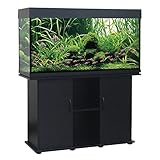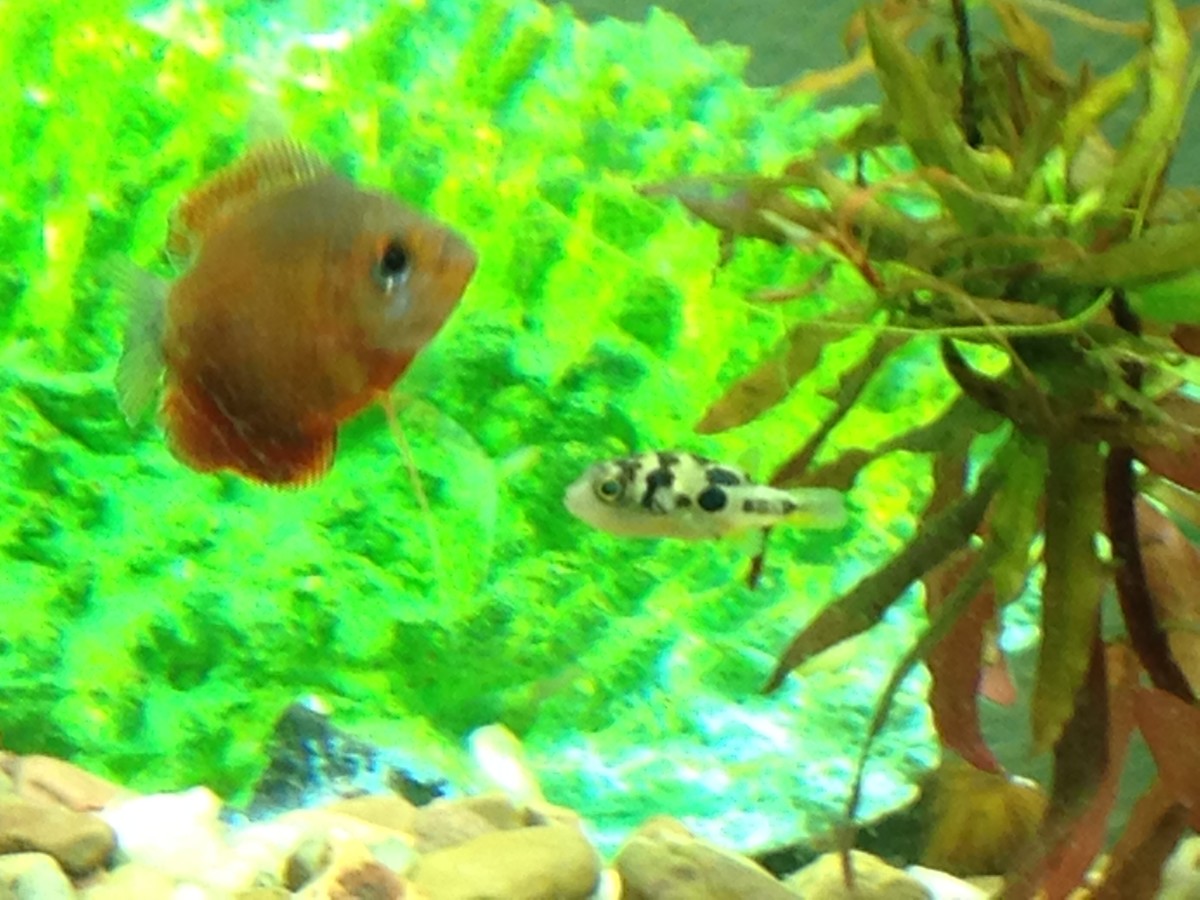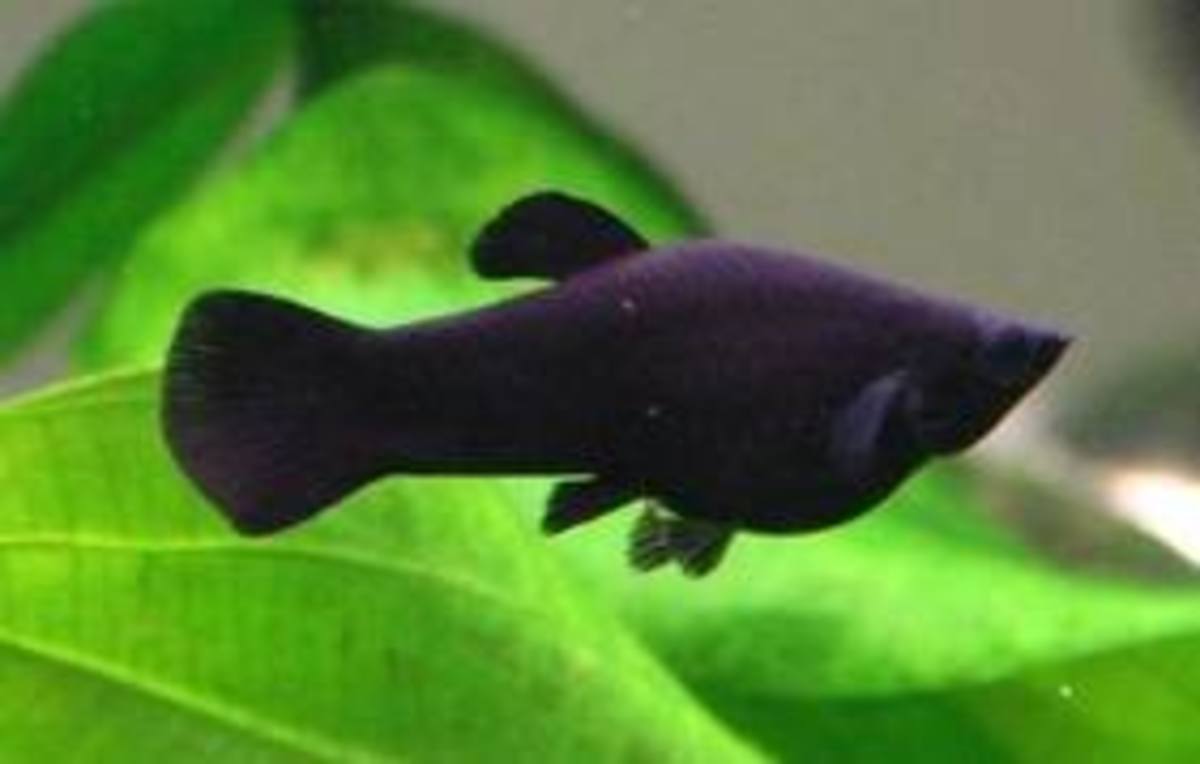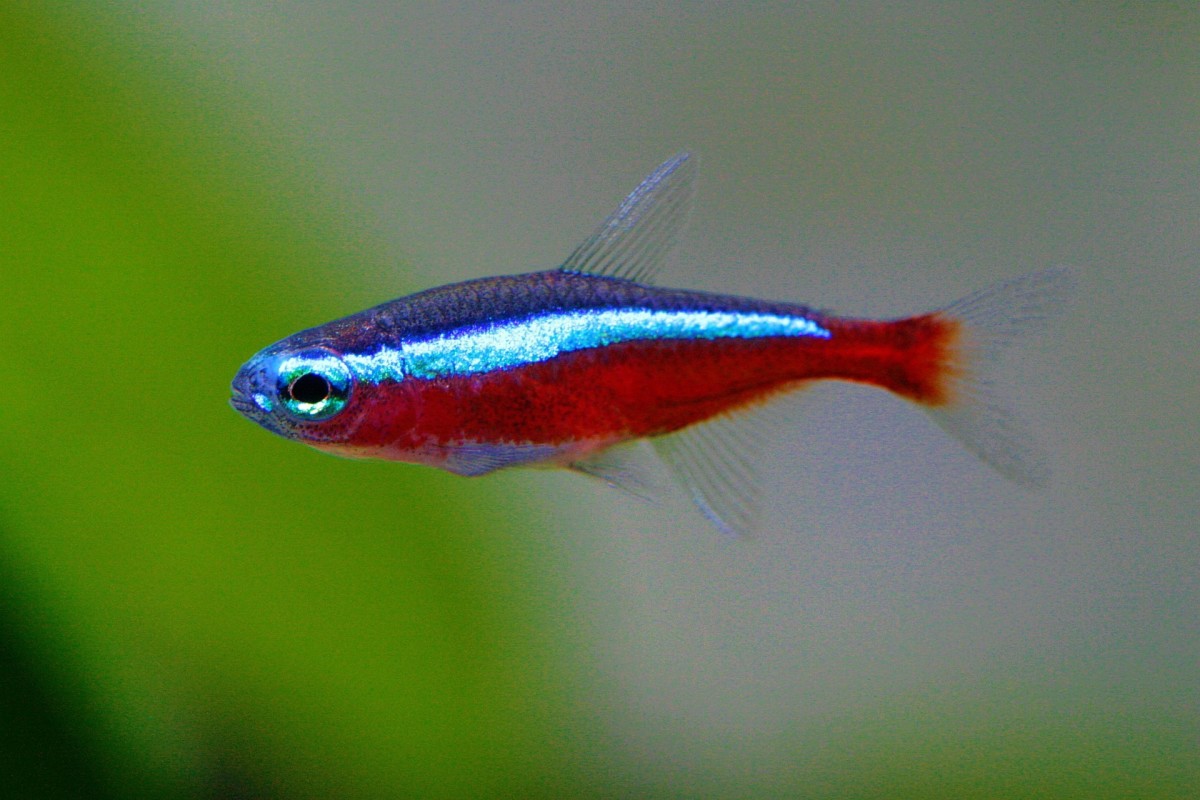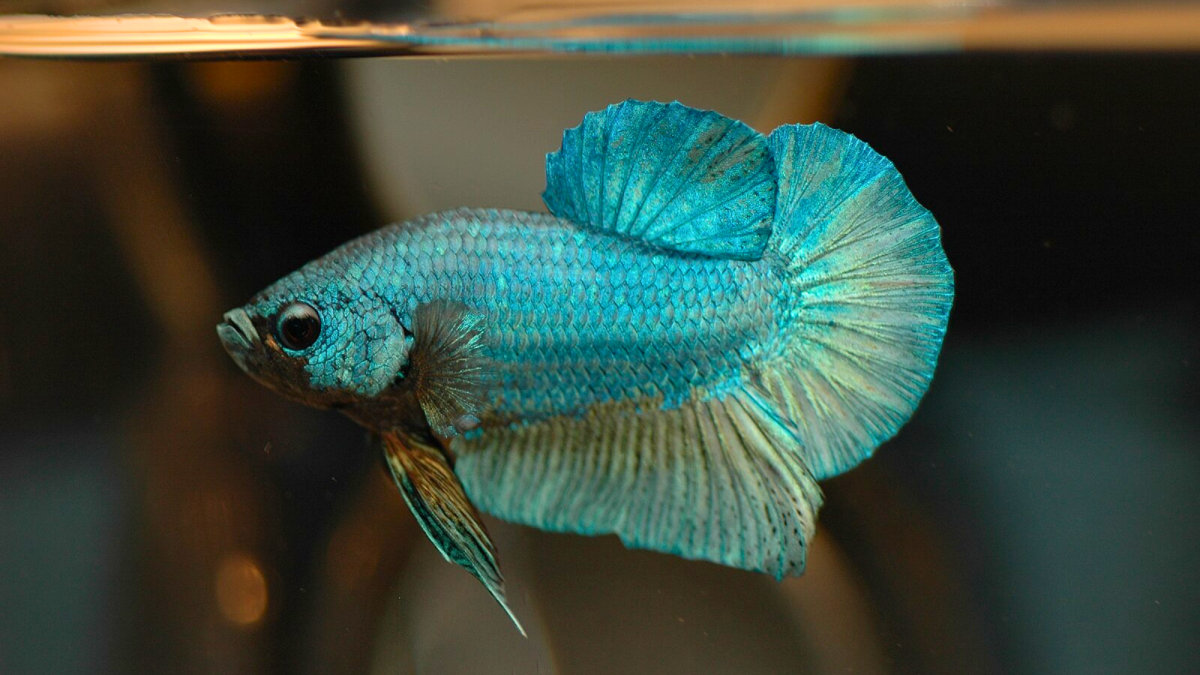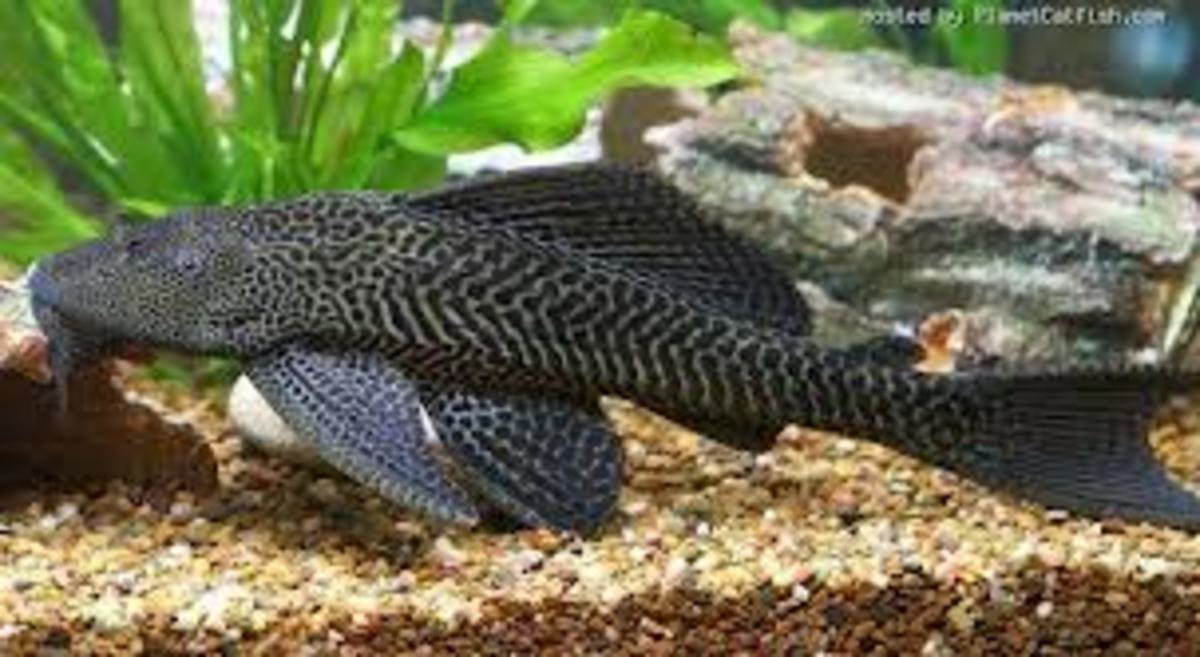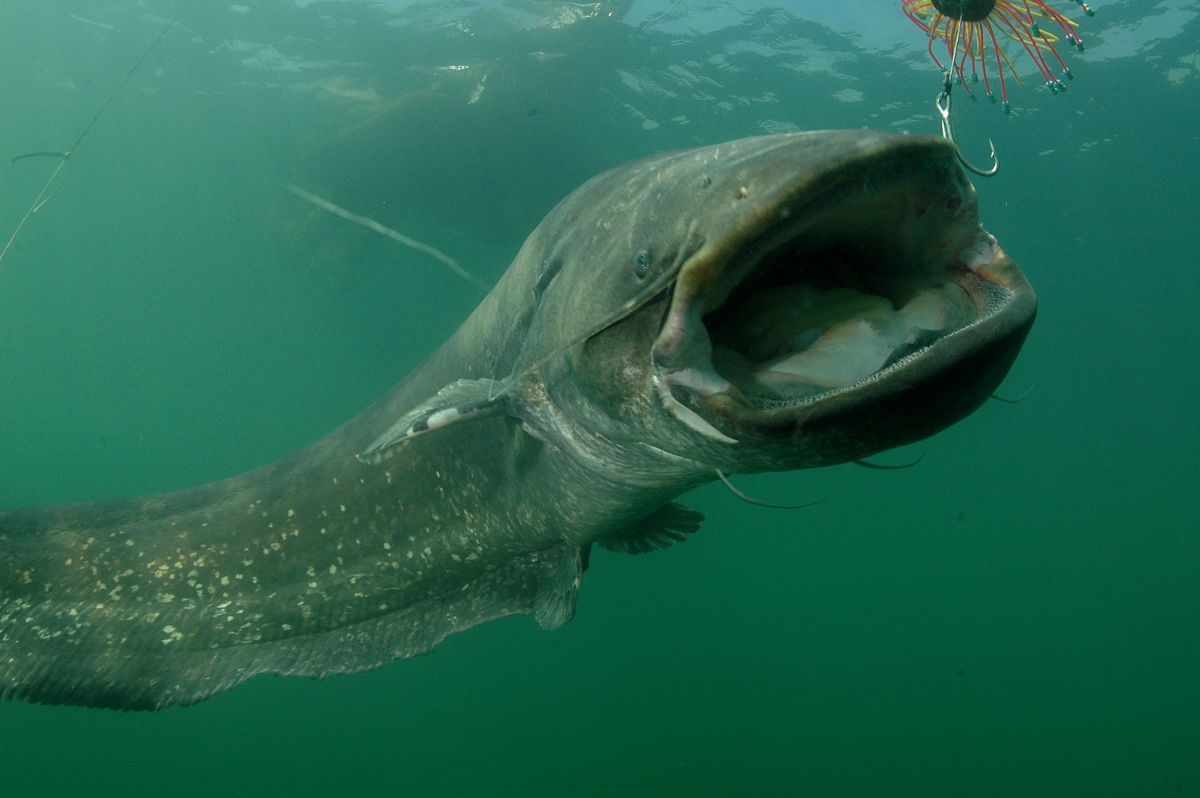Aquarium Giants: Which Fish Get HUGE? Big Freshwater Tropical Fish for Large Aquariums that are Sold Small
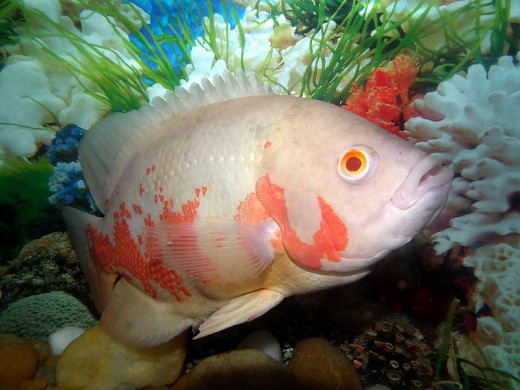
Can your tank handle that fish you've been eyeing?
It's easy for people looking at the wide selection of fish at the pet store to be tempted to buy a fish they don't know much about because they like the looks of it; unfortunately this can often lead to incompatible fish or an incompatible tank and the fish is the one that gets to suffer for the purchaser's ignorance. Many people even see a little information card informing them that this particular fish reaches very large sizes but perhaps they suscribe to the widely-accepted myth that fish grow to the size of their tank...and that's exactly what it is, a myth. While it is true that fish secrete a growth hormone to keep from entirely growing out of their tank it is equally true that they generally do not stop growing until they are already too large to live comfortably in the tank, their life spans will be shortened by stunting induced by inappropriate housing, and they will never reach their full potential for health and beauty. Some types of fish such as Oscars or Gouramis have a slightly different reaction to that growth hormone...only their heads stop growing, so eventually that poor fish's mouth will morph by the body's continuing growth until the fish can no longer eat and then it dies a slow and painful death.
Since you're reading this article, I can assume that you are a caring and responsible pet owner who wants to learn what you can to properly care for your pet. Perhaps you're looking at adding new fish, maybe you've made the mistake of buying the wrong one for your tank before and are trying to avoid doing it again. Whatever the reason, you have taken a responsible step in researching these pets. Please be aware that this is only a listing of popular freshwater fish that are often subjected to mistreatment due largely to their adult size (most are sold in pet stores as babies) and you should always research any pet you're planning on buying in-depth before making the decision.
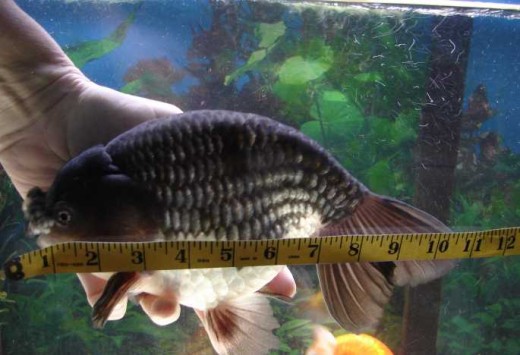
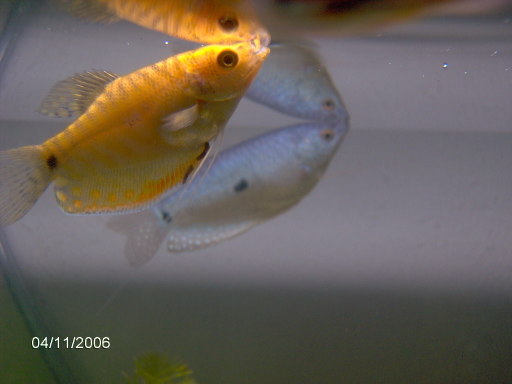
Goldfish - These rank at the very top, because they are the single most abused animal in the United States. A lot of it is due to their unique size requirements and their ready availability at affordable prices in stores. Contrary to popular opinion, a goldfish is not a "throwaway pet." They are exceptionally hardy. If cared for properly, they can live for up to -- drum roll, please -- 30 years! These are one of those fish that will stop growing entirely if the tank is too small, but are often already too big when they stop growing. They will almost certainly have a significantly reduced life span from the stunting.
A single-tailed goldfish such as a common, comet, or shubunkin can and often does reach sizes upward of 16", and need at least 30 gallons per fish. The tank must also be at least four times their size in length, and twice their size in width. This is a good rule of thumb in size parameters for most large fish.
A double-tailed goldfish such as a ryukin, lionhead, or pearlscale may only reach 8" in length and don't need as much free swim space because of their build. That said, they still need a good 10-15 gallons each, and more for some of the larger fancies such as orandas.
Sadly, goldfish bowls are still in common use, and are one of the worst environments for that fish due to improper or no filtering, exceedingly small spaces, and not enough water changes. Bear in mind that goldfish also produce a lot of waste and will need some very strong filtration. Several online sites offer great pointers for goldfish care.
Tinfoil Barbs - Easily and quickly reaching sizes up to 14" with an attitude to match, these fish are often purchased in the belief that they will get along just fine with their smaller barb cousins such as the Tiger Barb or Gold Barb where in actuality the Tinfoil will be able to cheerfully snack on these smaller fish within a couple short months. These fish are active and an attractive silver with black fins that are often bought for their looks without any prior knowledge regarding their temperment or size requirements.
Oscars - I'd like to think most people know what they're getting into with these fish, but sadly I'm discovering that that just isn't true. I recently had a customer ignore my assertion that the Oscar he was eyeing would not fit in his 10 gallon tank -- after all, the fish was only 3" long! He was one of the better ones, though, in that the man returned the fish four months later when it had nearly tripled in size rather than making him suffer in a tank unsuited to him. It is, sadly, still common practice to just make the fish stay until it dies. A little research could save a lot of problems for the fish, keep you from having to deal with a bad match, and can lead you into a more rewarding aquarium experience.
Pacus - There are many different species of Pacus, the ones I see most around here are Red-Bellied Pacus but all are closely related to piranhas, have varying levels of aggressiveness, and all get quite large...many over a foot long. A Pacu is a very attractive and outgoing fish but will be a major problem in your tank if you haven't planned properly for him ahead of time.
Silver Dollars - Relatively small in this company, the silver dollar generally grows to around 8" in diameter...which is still pretty big compared to most of the popular community fish out there! Silver Dollars prefer to be in groups, and a group of 8" fish takes up a lot of space very fast.
Gouramis - Gouramis come in a variety of sizes but all are pretty large...generally sold in pet stores around 2"-3" Gold Gouramis, Blue Gouramis, Pearl Gouramis and the like reach about 8" while Kissing Gouramis hit up to 12" and Giant Gouramis grow to a whopping 28"! There are some smaller Dwarf Gouramis that only grow 4"-5", but be absolutely certain you know what you're getting before you buy them, you don't want to expect 5" and end up with two feet.
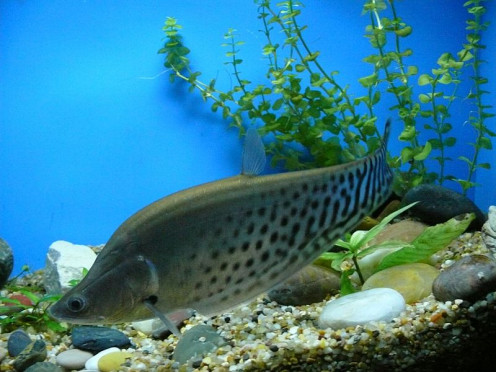
Knife Fish - Knife fish are a very attractive fish that is also seen in pet stores at just about 2" long...but the Ghost Knife can reach sizes of up to 20", the Banded Knife can get to 24", the Glass Knife hits around 18", and my absolute favorite the Clown Knife can reach a whopping 40" in length. These are exceedingly interesting fish to look at (my sister thinks they're creepy when they're big though) and can make some gorgeous specimens if kept properly.
Irridescent Shark - Another fish I often see being sold at Wal-Mart at the adorable size of about 2" long and collected by numerous aquarists who can't understand why their peaceful community fish start disappearing and start wondering when that fish will stop growing. Truth is these attractive little fish need at very least 135 gallons in a long tank and reach sizes of 40". Sadly very few of these fish get to live out their entire life span due to misunderstandings about them and often die within a year or two either from overcrowding or inappropriate water parameters (they can get somewhat picky about that).
Need the perfect housing for your aquatic giants? Size up with an attractive aquarium set
Common Plecostomus - Another very widely abused fish that can reach over two feet in size. Unlike some of the carnivorous giants the Pleco can take up to a couple of years to reach its full size so it can sneak up on you and reign destruction on your tank décor as it gets larger and more crowded.
Pomacea canaliculata - while not a fish I nevertheless felt that these snails deserved a mention...while most "mystery snails" (apple snails) sold in pet stores are Pomacea bridgesii, or Brigs, some do on occasion get canaliculata, or Canas. Canas look, to the untrained eye, nearly identical to Brigs with one important difference. While a Brig grows to about the size of a golf ball and needs about 2 ½ gallons each, a Cana reaches the size of a softball and needs about 10 gallons all to itself. As with all apple snails Canas cannot be expected to live on algae alone and need some greens or snail cookies that are high in calcium to ensure their health and they are very messy creatures that require the same level of filtration you would afford to a goldfish. For more information on the care of apple snails and how to spot a Cana check out http://www.applesnail.net (again, no affiliation, I just think it's an excellent site).
Full-grown aquarium giants in a 275-gallon tank, including several fish from this list
This is by no means a comprehensive list, and I will probably be adding to it as time goes by. These are merely some of the most common freshwater fish that are still suffering widespread abuse because of their size and individual needs. I implore anyone who is thinking of getting a fish or has problems with the fish they have to thoroughly research every aspect of their care before purchase. If it's something you wouldn't do to a dog, why is it alright to do it to a fish?
Thank you for taking the time to further your understanding of these amazing animals. Please do take a moment to leave a comment below if you have thoughts or other fish to add, or if you have additional questions.
Was this hub helpful? Check out more aquarium hubs from the same author
- How to Care for Freshwater Tropical Fish
Not sure where to start with the care of freshwater aquarium fish? Begin with this basic overview, which explains the kind of information you'll need before buying any fish or equipment. - Python No Spill Clean and Fill -- A Product Review &...
Aquarium water changes are necessary, but they don't have to be difficult. The Python No Spill Clean and Fill is an excellent tool for your fish tank maintenance. - Tips for Choosing an Aquarium
Choosing an aquarium is the first step to getting the aquarium setup of your dreams. A lot of thought needs to go into choosing a fishtank; aquariums are both gorgeous decorations and a lifelong home for your freshwater fish or saltwater fish. - Aquarium Stocking Levels: How Many Fish Per Tank and...
Aquarium stocking levels are an essential part of fish health. Here are some guidelines for how to stock a freshwater aquarium, as well as an overview of possible exceptions and how often you should add fish to the tank. - Managing Blue-Green Algae in a Freshwater Aquarium: ...
Blue-green algae can be one of the trickiest aquarium problems to fix. Here are a few tips, and why blue-green algae is different from other types of algae in your fish tank.


